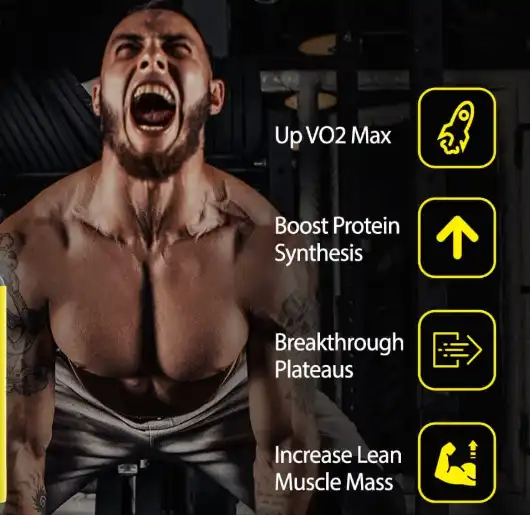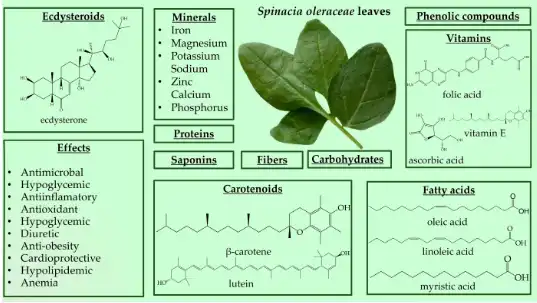Ecdysterone Powder are two popular supplements in the fitness and bodybuilding community, known for their potential to enhance muscle growth and athletic performance. Both compounds belong to the class of ecdysteroids, which are naturally occurring steroid hormones found in plants and insects. As interest in these substances grows, many athletes and fitness enthusiasts are curious about their relative strength and effectiveness. In this blog post, we'll explore the comparison between ecdysterone powder and turkesterone, examining their properties, benefits, and potential impact on athletic performance.

What are the main differences between ecdysterone and turkesterone?
Ecdysterone Powder are both ecdysteroids, but they have distinct molecular structures and potentially different effects on the human body. Ecdysterone, also known as 20-hydroxyecdysone or beta-ecdysterone, is the most common and well-studied ecdysteroid. It is found in various plants, including spinach and quinoa, and has been used in traditional medicine for centuries.
Turkesterone, on the other hand, is a less common ecdysteroid primarily found in Ajuga turkestanica, a plant native to Central Asia. While both compounds share similar properties, there are some key differences to consider:
- Chemical structure: Ecdysterone has a slightly different molecular structure compared to turkesterone, which may contribute to variations in their effects on the body.
- Availability: Ecdysterone is more widely available and has been studied more extensively than turkesterone, making it easier to find and potentially more reliable in terms of research-backed benefits.
- Potency: Some anecdotal reports suggest that turkesterone may be more potent than ecdysterone, but scientific evidence to support this claim is limited.
- Mechanism of action: While both compounds are believed to work through similar pathways, there may be subtle differences in how they interact with cellular receptors and influence protein synthesis.
Despite these differences, both ecdysterone and turkesterone are considered to have similar overall effects on muscle growth and athletic performance. The choice between the two often comes down to personal preference, availability, and individual response to the supplements.
How do ecdysterone and turkesterone affect muscle growth?
Both Ecdysterone Powder are believed to promote muscle growth through various mechanisms. While research on turkesterone is more limited, studies on ecdysterone have shown promising results in terms of its anabolic effects. Here's how these compounds may influence muscle growth:
- Protein synthesis stimulation: Ecdysterone has been shown to increase protein synthesis in muscle cells, which is crucial for muscle growth and repair. This effect is believed to be mediated through the Akt/mTOR pathway, a key regulator of muscle hypertrophy.
- Nitrogen retention: Both compounds may help improve nitrogen balance in the body, which is essential for maintaining and building muscle mass.
- Muscle fiber activation: Some studies suggest that ecdysterone can activate satellite cells, which are crucial for muscle repair and growth.
- Improved recovery: Ecdysteroids may help reduce muscle damage and inflammation, leading to faster recovery times and potentially allowing for more frequent and intense training sessions.
- Hormonal modulation: While not acting as hormones themselves, ecdysterone and turkesterone may influence the body's hormonal balance, potentially optimizing conditions for muscle growth.
It's important to note that while many users report significant gains in muscle mass and strength when using ecdysterone or turkesterone, individual results can vary. Factors such as diet, training intensity, and genetic predisposition all play crucial roles in determining the effectiveness of these supplements.
Some studies have compared the anabolic effects of ecdysterone to those of traditional anabolic steroids, suggesting that it may have similar muscle-building potential without the associated side effects. However, more research is needed to fully understand the long-term effects and optimal dosing strategies for both ecdysterone and turkesterone.
Can ecdysterone or turkesterone improve athletic performance?
The potential of Ecdysterone Powder and turkesterone to enhance athletic performance has garnered significant interest among athletes and researchers alike. While more studies are needed to definitively prove their efficacy, existing research and anecdotal evidence suggest that these compounds may offer several benefits for athletic performance:
- Increased strength: Several studies have reported improvements in strength and power output among participants supplementing with ecdysterone. This could translate to better performance in strength-based sports and activities.
- Enhanced endurance: Some users report improved endurance and reduced fatigue when using ecdysteroids, potentially due to their effects on energy metabolism and muscle efficiency.
- Faster recovery: The anti-inflammatory and muscle-protective properties of ecdysterone and turkesterone may contribute to quicker recovery times between training sessions, allowing for more frequent and intense workouts.
- Improved body composition: By promoting lean muscle mass growth and potentially aiding in fat loss, these supplements may help athletes achieve a more favorable body composition for their respective sports.
- Adaptogenic effects: Some research suggests that ecdysteroids may have adaptogenic properties, helping the body better cope with physical and mental stress associated with intense training and competition.
It's worth noting that the World Anti-Doping Agency (WADA) has been monitoring ecdysterone and considering its potential inclusion on the list of prohibited substances. This interest from WADA suggests that these compounds may indeed have significant performance-enhancing effects.
When comparing ecdysterone and turkesterone for athletic performance, the limited research on turkesterone makes it difficult to draw definitive conclusions about its relative strength. Some users report that turkesterone feels more potent, but this could be due to various factors, including individual response, dosage, and product quality.
Ultimately, the choice between ecdysterone and turkesterone for improving athletic performance may come down to personal experimentation and preference. As with any supplement, it's essential to consult with a healthcare professional before incorporating these compounds into your training regimen, especially if you're a competitive athlete subject to drug testing.
Conclusion
While both ecdysterone powder and turkesterone show promise in enhancing muscle growth and athletic performance, the question of which is stronger remains somewhat open-ended. The more extensive research on ecdysterone provides a clearer picture of its benefits and mechanisms of action, while turkesterone's potential is still being explored.
Based on current evidence and user experiences, it appears that both compounds can be effective in promoting muscle growth and improving athletic performance. The choice between the two may depend on factors such as availability, cost, and individual response. As research in this area continues to evolve, we may gain a better understanding of the relative strengths and optimal applications of these intriguing ecdysteroids.
If you are also interested in this product and want to know more product details, or want to know about other related products, please feel free to contact lea_slsbio@163.com,WhatsApp+86 13193326505.

References
1. Dinan, L. (2001). Phytoecdysteroids: biological aspects. Phytochemistry, 57(3), 325-339.
2. Gorelick-Feldman, J., et al. (2008). Phytoecdysteroids increase protein synthesis in skeletal muscle cells. Journal of Agricultural and Food Chemistry, 56(10), 3532-3537.
3. Isenmann, E., et al. (2019). Ecdysteroids as non-conventional anabolic agent: performance enhancement by ecdysterone supplementation in humans. Archives of Toxicology, 93(7), 1807-1816.
4. Parr, M. K., et al. (2015). Ecdysteroids: A novel class of anabolic agents? Biology of Sport, 32(2), 169-173.
5. Syrov, V. N. (2000). Comparative experimental investigation of the anabolic activity of phytoecdysteroids and steranabols. Pharmaceutical Chemistry Journal, 34(4), 193-197.
6. Bathori, M., et al. (2008). Phytoecdysteroids and anabolic-androgenic steroids--structure and effects on humans. Current Medicinal Chemistry, 15(1), 75-91.

